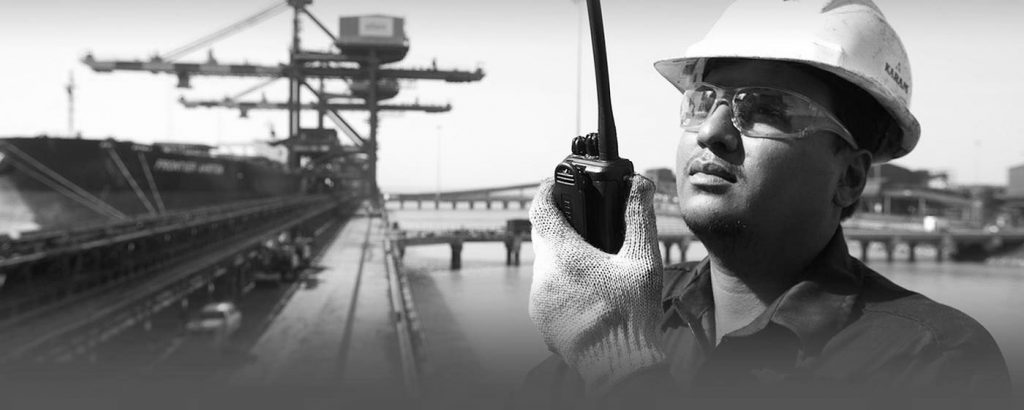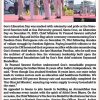Goa is abuzz with excitement as vintage bike and car owners, users, collectors and fans are decking […]

NGT PROTECTS FISHING
Environment October 5, 2016The Pune bench of the National Green Tribunal (Western Zone) has struck down environmental clearance granted to Mormugao Port Trust (MPT) – represented by assistant solicitor general Neeraj Kaul – to undertake dredging for the benefit of Jindal Steel. The order came following objections raised by the Old Cross Fishing Canoe Owners Co-operative Society and Baina Ramponkar & Fishing Canoe Owners Society represented by Nigel D’ Costa. Here is part of the tribunal’s judgement presided over by Justice Jawad Rahim
We are of the opinion that the exemption given by the Ministry of Environment & Forests to the impugned project from public consultation for grant of environmental clearance is without any authority of law, is arbitrary and devoid of any powers available under EIA notification. Consequently, the EC dated February 9, 2016 is also invalid and issued without compliance of the provisions of EIA Notification, 2006.
We now proceed to consider an alternate plea by the additional solicitor general (ASG) to bail out the first respondent from legal implications of illegality in their project. He submits that the tribunal may take into consideration among other issues that this is a public project and any adverse order will result in loss of public funds and delay the project which is in public interest.
Per contra, the appellant has brought to our notice several incidental issues that may arise as a consequence of capital dredging in the area. He has highlighted that capital dredging cannot be considered in isolation to increased material handling capacity of the port after capital dredging. The increase in depth of water in the approach channel will allow movements of large vessels with greater loads which will have a direct impact on surrounding environment, especially aquatic life and ecology.
We have taken into consideration the contentions. It is admitted that the first respondent is the government instrumentality and claims to have embarked on a public project. If so, then public interest shall be of paramount considerations, more particularly, when it relates to likely adverse impacts on the environment, which has a bearing on posterity.
The ASG’s contention is in the nature of seeking a discretionary order to allow the project on the basis of ‘hardship’. We are conscious of the fact that, even if, on question of law, the impugned order is quashed or set aside, the project has to be considered keeping in mind a general legal principle which deals with prevention of undue hardship, etc.
In case of an order of this nature, balance of convenience, irreparable injury and hardship, though can be canvassed, cannot become a harbinger for consideration as in the case of grant of injunctive orders. We are dealing with a case relating to adverse, severe impacts on environment as a consequence of illegality in the process of environment clearance, which has emboldened the project proponent to indulge in capital dredging, which has changed very geomorphology of the sea bed. Therefore, merely because the project involves public funds cannot be a defence from further consequential orders.
In the present stage of the appeal, there is no question of deciding the proportion of damage or liability of the parties. In the this case, what we were dealing with is legality, propriety and sustainability of the impugned MoEF order from which follows several severe environmental consequences. The MoEF order shows that it has not only failed to apply its mind to the factual aspects of the project, but as for unexplained reasons indulged in misinterpreting provisions of Clause-7 of the EIA notification, which exempts “only certain projects”.
In this case, it was important for MoEF to have identified whether the project in question is maintenance dredging or capital dredging. Distinction has been totally ignored and for obvious reasons, the project which is capital dredging is construed as maintenance dredging, which is exempt under Clause-7 of the EIA notification. Therefore, we have taken a view that it is not a neglect or omission, but may be for some other reasons.
Be that as it may, the ultimate effect of such a decision is important. As a consequence, the first respondent has proceeded with capital dredging and now claims equity on the plea that it has completed about 60 per cent of the work. Therefore, the doctrine of proportionality cannot be implied in the present case to hold that whatever may be the illegality or un-sustainability of the MoEF order, the project must be allowed to continue.
Another important aspect that needs to be taken into consideration which non-suits the first respondent from equitable relief is a fact that despite being equipped with the best of legal support and administrative advisors, it has commenced the project in January 2016, much before grant of environmental clearance on February 9, 2016. This shows the disdainful conduct of the first respondent in treating mandatory provisions as a mere formality and not as necessity to commence its project.
The wrongdoer cannot take a plea of its own wrong unless it is influenced by external factors. In this case, the act done by the first respondent is of his own doing and it therefore cannot take shelter of ‘fait accompli’, having completed the project to the extent of 60 per cent to seek further indulgence to complete it after being declared as a project without EC. Thus, we are not inclined to believe that the balance of convenience is in favour of the first respondent. In consequence, we are of the opinion that even if the project is in public interest, it may be to a very minimal extent, but larger public interest is certainly affected by this project.
Considering the above discussion, we are of the considered view that when the precautionary safeguards incorporated in the EIA Notification have not been followed, the plea of the first respondent of the public project, project delay, etc. cannot be accepted. The first respondent obliged to show that its project is environmentally benign and aimed at sustainable development, in a procedure, strictly in compliance with the EIA Notification, 2006. We also need to recognise that in all such cases the environment is the silent sufferer and not represented in present litigation.
The sum of our conclusion would be a balance of convenience, though canvassed by the ASG to be in favour of the project proponent, is not in its favour for the simple reason that unless the project as appraised is strictly as per EIA Notification based on precautionary principle. There could be reasonable apprehensions of irreversible environmental damages which in any case cannot be compared with economic loss, particularly when the first respondent is put on notice through an interim order by this tribunal and also that it has commenced dredging activity much before obtaining impugned environmental clearance.
And therefore, we pass the following orders; based on the precautionary principle as enumerated in Section 20 of the National Green Tribunal Act, 2010.
1 The communication dated September 23, 2015 of MoEF granting exemption from public consultation to the project of Respondent No 1 is quashed as illegal, arbitrary and in violation to the provisions of the EIA Notification, 2006. Consequently, the impugned EC dated February 9, 2016 is also quashed and set aside.
2 The matter is remanded back to EAC of MoEF for further action.
3 The interim order dated May 4, 2016 stands vacated. However, in view of further proceedings regarding the restoration and restitution, the bank guarantee deposited by Respondent No 1 with Goa Coastal Zone Management Authority shall be retained by the authority till further orders.
4 Respondent No 1 and MoEF are directed to pay cost of `2 lakhs each to both the appellants within four weeks.
5 The first respondent shall not proceed with dredging, except as provided in this order.
The matter will be further heard regarding the restoration and restitution of the environment on October 5, 2016.















